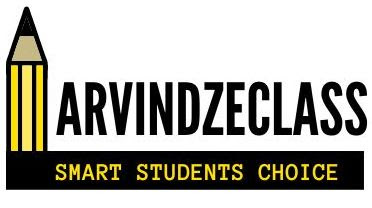What is block diagram of computer and explain their function?
OR
Draw the block diagram of computer.
A computer is divided into three parts1) Input Device: An input device is used to enter data and give instructions to a computer.
2) Output Device: An output device gives results after processing by the CPU (central processing unit)
 |
| Block Diagram of Computer |
3) CPU:
CPU is also called brain of a computer which takes instructions from
input device and process and process it. CPU has three parts:
Other Topic of this Chapter
i) ALU: ALU (arithmetic & logical unit ) perform mathematical calculations, and helps in taking decision.
ii) Control unit: Control unit manages all input and output signals in a computer.
iii) Memory unit: Memory unit stores the results after processing in primary and in secondary memory in a computer
--------------------------------------------------
What is computer memory explain?
OR
What is computer memory with example?
 |
| Type of Computer Memory |
1) Primary Memory: Primary memory is important to run a computer, so without primary memory computer doesn't work. It is placed inside the computer, so it is also called Internal Memory. For example: RAM (Random Access Memory), ROM (Read Only Memory)
2) Secondary Memory: Secondary Memory is used to save data for future reuse. It is placed outside the computer, so it is also called External Memory. For example: PD (Pen Drive), CD (Compact Disc), HD (Hard Disc)
Class 10 AI (417) Notes
Part - A
Chapter 1 – Communication Skills
Chapter 2 –Self - Management Skills
Chapter 3– Basic ICT Skills
Chapter 4 - Entrepreneurial Skills
Chapter 5 –Green Skills
Part - B
Chapter 1 – Introduction to AI
Chapter 2– AI Project Cycle
Chapter 3 – Advance Python
Chapter 4 – Data Sciences
Chapter 5 – Computer Vision
Chapter 6 – Natural Language Processing
Chapter 7 – Evaluation
Computer Memory Units:
What is software?
OR
What are the 3 types of software?
Types of software:
There are three types of software.
1) Application Software: Software which are developed for specific task, are called application software. These software directly help users. For example: MS Word (for typing) , MS Paint (for Painting)
2) System Software: These software are used to manage computer parts like mouse, Keyboard, CPU, Monitor, Hard disc. This software indirectly helps users. For example: Window 11, Linux, and Android.
3) Utility Software: These software help other software like system software, application software to improve their performance. For example: Antivirus (removes viruses), Backup software (take keeps backup)
What are main functions of operating system?
OR
What are the six function of operating system?
These are the six functions of OS (operating system):
1) Memory Management: OS manages the computer memory like Hard disc partition, sharing memory in processing, and saving files, software.
2) Process Management: OS handles multiple operations, so it seems computer running multiple software at same time.
3) Device Management: OS controls input device, output device, and CPU. If any device malfunction, OS gives warning message to user.
 |
| Functions of Operating System |
4) Security Management:
OS works as a security guard against any threat. It creates
administrator, standard, and guest accounts, so stranger can’t control a
computer. It provides firewall securities against viruses.
5) File Management:
OS helps to save, delete, and rename files in hard disc. It also
provides disc cleanup, disc de-fragmentation, and backup services.
6) User Interface:
OS works as an interface between user and computer. It helps to install
and uninstall software and without OS, application software doesn’t
work on computer.
What are the different types of operating system?
OR
What are the 4 types of operating system?
According to user interface, number of users, and processing bases OS (operating system) can be divided into four categories.According to Number of users
1) Single User: A single user OS gives access to a single user at a time. For example MS- DOS
2) Multiple Users: Some OS provides access to hundreds or thousands users at a same time on a network to share software or hardware. For example: Linux, Unix
According to CPU Processing
1) Single Processing: This OS executes single task at a time on a single CPU.
2) Multiple Processing: This type of OS executes multiple tasks simultaneously on a single or multiple CPUs.
According to User Interface
1) CUI: In CUI (character user interface) user gives commands in text at command prompt (c:\dir>). CUI doesn’t provide any graphical interface to give instructions to a computer. CUI isn’t user friendly interface because hundreds to commands needs to be remembered to give instructions to a computer. For example: MS-DOS
2) GUI: In GUI (graphical user interface) user gets graphical interface like button, icon, and mouse point to give instructions to a computer. GUI is a user friendly interface which is easy to give instructions to a computer.
According to Time Sharing
1) Real Time: Real Time OS gets instructions from input devices and responses at same time. For example: traffic signal, ATM
2) Distributed: In distributed OS multiple tasks are carried out in multiple computer by sharing different locations in a network and user thinks he is working on a single computer.
3) Time Sharing: Time sharing OS allows user to work on multiple applications by switching among them. The switching occurs so frequently that the user thinks he is working on all applications at same time.







No comments:
Post a Comment